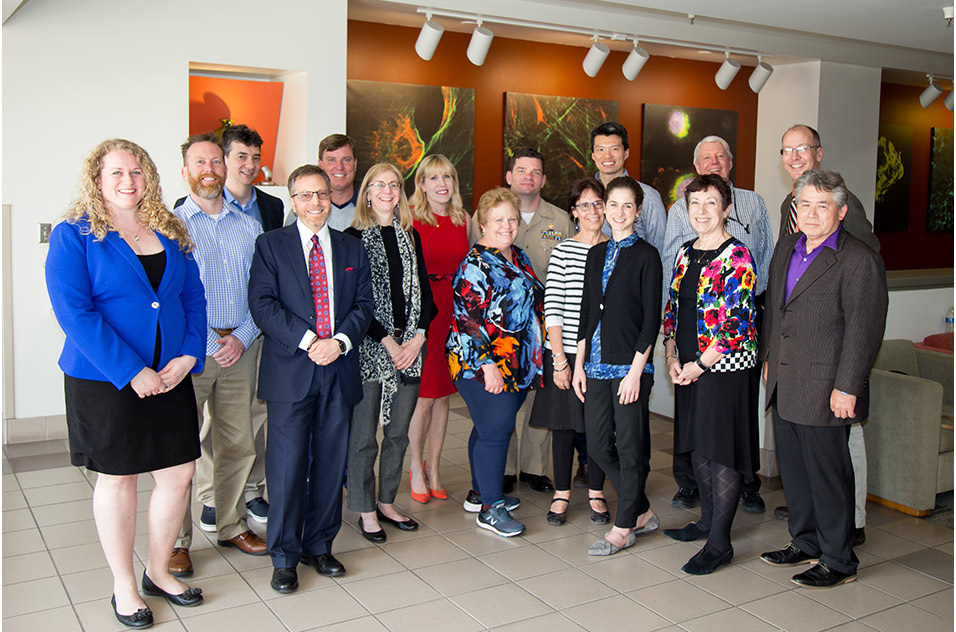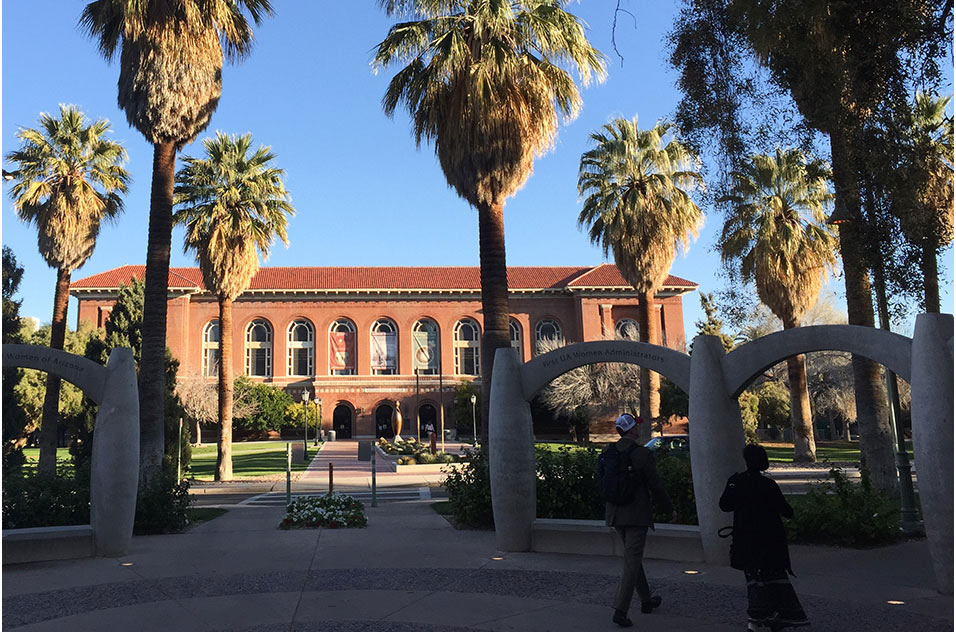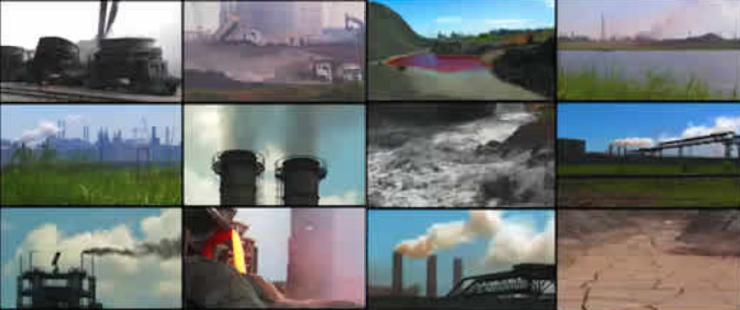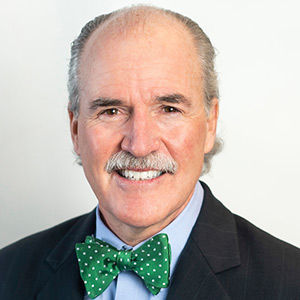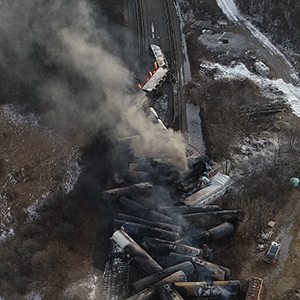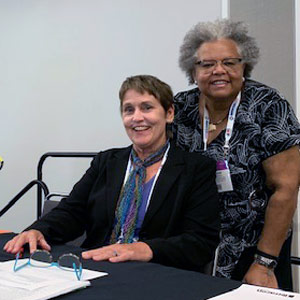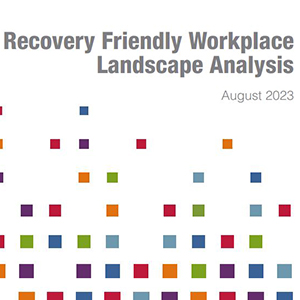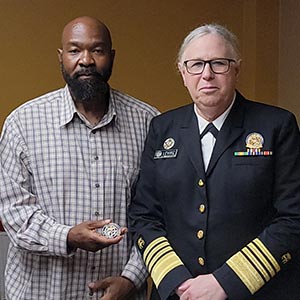A workshop on a mock train derailment — with chemical releases into the community — brought together local, tribal, and international key experts to Tucson. The group gathered Feb. 28 — March 1 to explore health effects and medical treatment research in the disaster’s aftermath.
The training workshop attracted approximately 135 first responders, health care providers, academic researchers, students, community members, and government representatives. They grappled with how to quickly mobilize data collection and time-critical research while responding to the emergency.
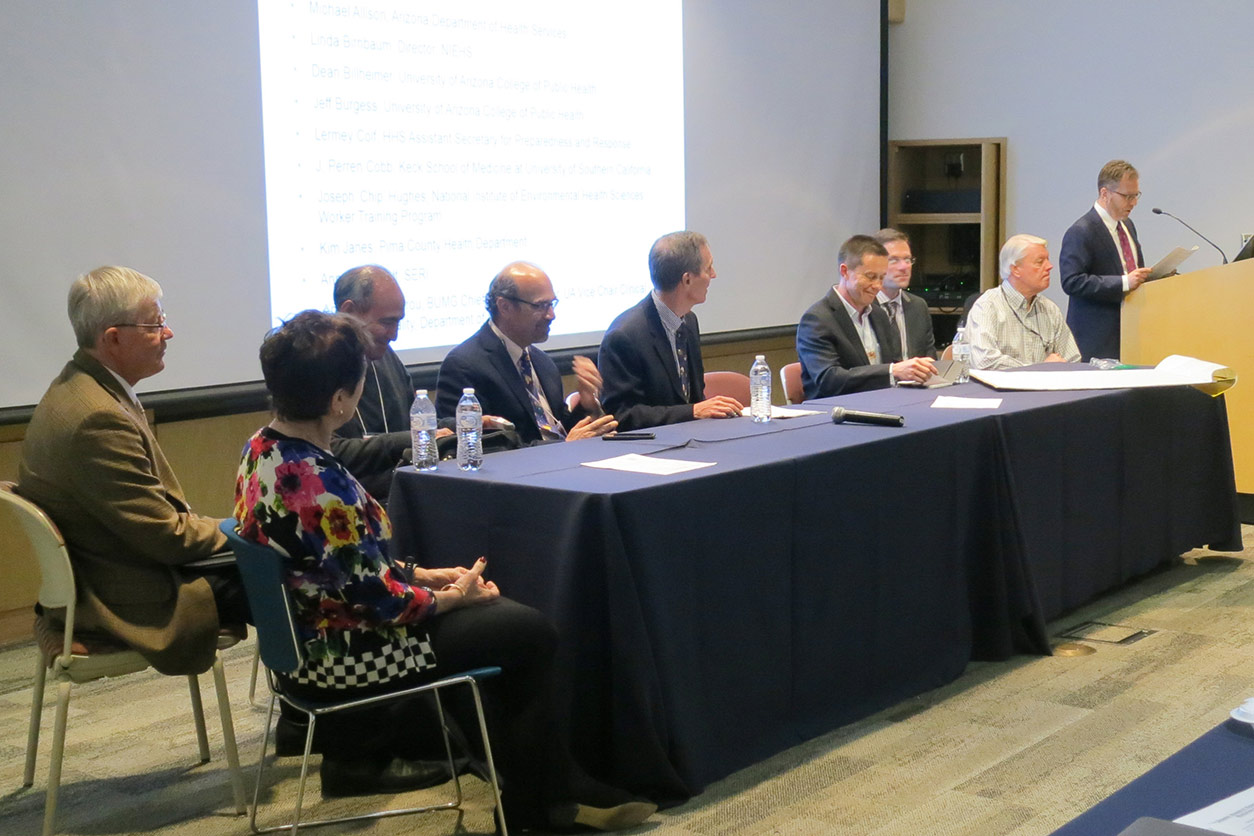 Miller, at podium, introduced a panel of speakers that included NIEHS and National Toxicology Program Director Linda Birnbaum, Ph.D., second from left; Joseph “Chip” Hughes, far right, head of the NIEHS Worker Training Program; and others. (Photo courtesy of Jim Remington)
Miller, at podium, introduced a panel of speakers that included NIEHS and National Toxicology Program Director Linda Birnbaum, Ph.D., second from left; Joseph “Chip” Hughes, far right, head of the NIEHS Worker Training Program; and others. (Photo courtesy of Jim Remington)Latest in a series
This event was the fourth in a series of tabletop exercises (see sidebar) led by the National Institutes of Health (NIH) Disaster Research Response (DR2) program. NIEHS leads the program, with Senior Medical Advisor Aubrey Miller, M.D., at the helm. The institute collaborates with the National Library of Medicine (NLM), which was represented by NLM Disaster Information Management Research Center Branch Chief Stacey Arnesen.
NIEHS, the University of Arizona (UA) College of Medicine-Tucson, the UA Mel and Enid Zuckerman College of Public Health, the UA College of Pharmacy, and the Bio5 Institute jointly sponsored the meeting.
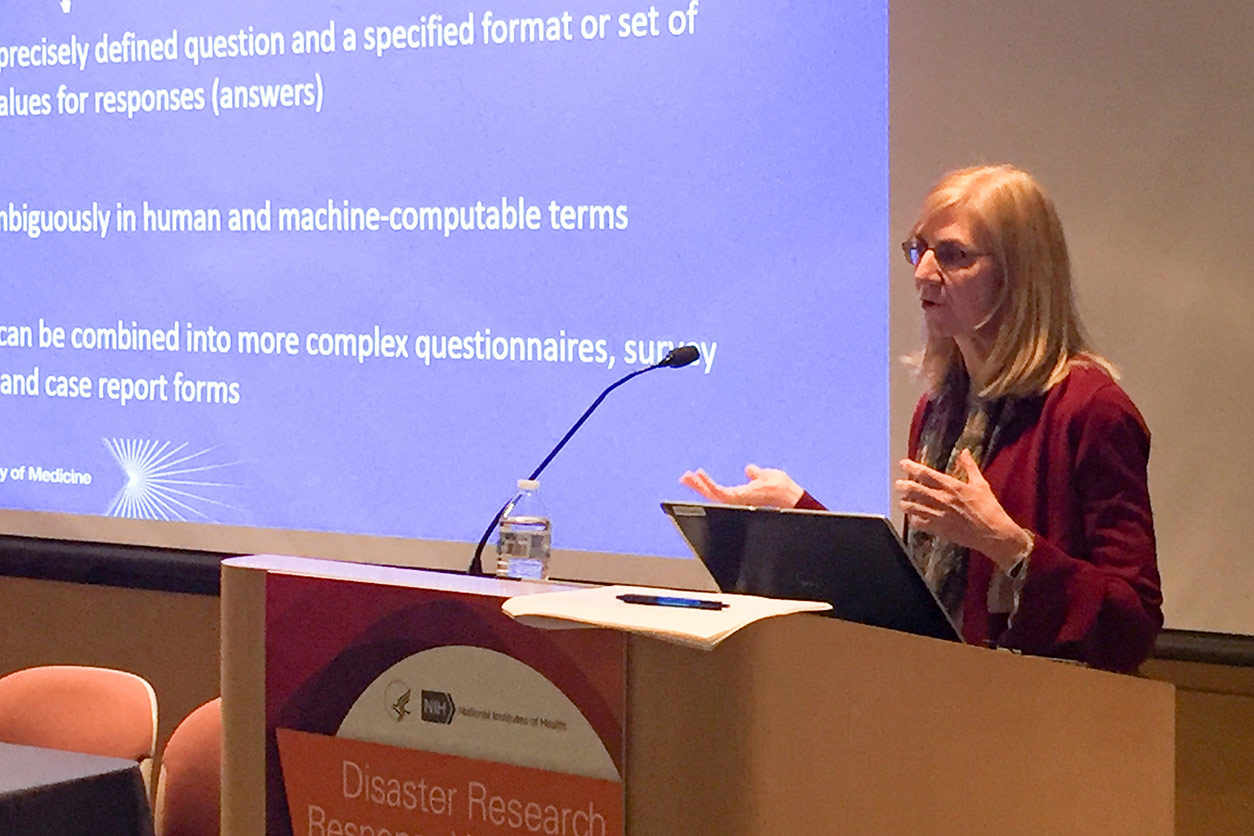 Arnesen emphasized that data sharing is a critical part of a new NLM strategic plan and advised participants on aspects of data collection. (Photo courtesy of Richard Kwok)
Arnesen emphasized that data sharing is a critical part of a new NLM strategic plan and advised participants on aspects of data collection. (Photo courtesy of Richard Kwok)Workshop included many firsts
According to Miller, the Arizona event was the first DR2 training scenario to involve an accident rather than a natural disaster. The mock train derailment and explosion involved release of chlorine gas, liquid propane, and the organophosphate pesticide malathion. It was the brainchild of organizers from the Tucson area, which has a major rail hub southeast of downtown.
Another first was the dual focus on emergency management and health care responses, and potential community exposures and longer-term health impacts. Organizers also tested rapid development of study protocols through a novel mock review by UA officials.
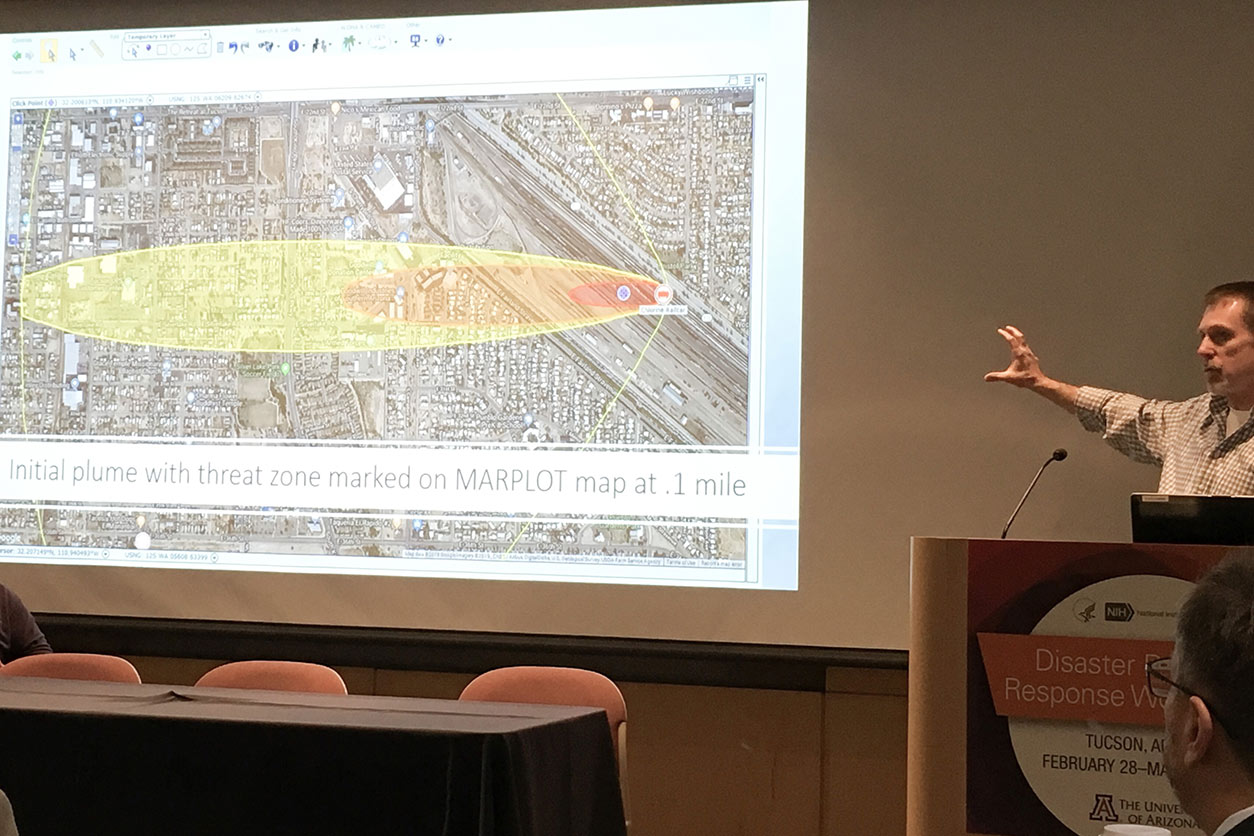 Keith Mundy, from the International Chemical Workers Union Council, shared a map showing the hypothetical chemical plume’s spread, to help participants grasp the extent of the affected areas. (Photo courtesy of Liam O’Fallon)
Keith Mundy, from the International Chemical Workers Union Council, shared a map showing the hypothetical chemical plume’s spread, to help participants grasp the extent of the affected areas. (Photo courtesy of Liam O’Fallon)University faculty and students addressed mapping data streams, taking care of pets, using emergency alert systems, integrating medical records with community studies, and other challenges.
Participants, such as Sandra Espinoza from the Pima County Office of Emergency Management (OEM), were enthusiastic about the experience. “It’s not that research was something that we at OEM didn’t care about,” she said. “But to find out that there are researchers already in our town studying these things that we ‘what if’ about is great to know.”
Equipping the next generation
Student posters and flash talks were another new feature. “Through our partnership with the university, student participation was brought in early, and we learned new ways academic partners can be an invaluable resource,” said Miller.
“This [event] inspired me with the innovations on the horizon, such as the student presentations of IPAWS,” said UA pharmacist Chris Edwards, Pharm.D.. The Integrated Public Alert & Warning System (IPAWS) is run by the Federal Emergency Management Agency.
 UA students, from left, Yoshira Ornelas Van Horne, Johnathon Blohm, and Rietta Wagoner presented posters and a flash talk on environmental and animal sampling. (Photo courtesy of James Remington)
UA students, from left, Yoshira Ornelas Van Horne, Johnathon Blohm, and Rietta Wagoner presented posters and a flash talk on environmental and animal sampling. (Photo courtesy of James Remington)Data and health care
Participants discussed the broad array of information collected by diverse partners. “The exercise was a really ambitious effort,” Miller said.
- Data on safety and effectiveness of medical treatments supports research to improve outcomes.
- Information on the clinical course of the injured sheds light on health resource needs for lung injuries, mental health, and other impacts.
- Indicators of community health in the short and long term help ensure that health effects are addressed, and the environment is safe.
“It’s two or three levels beyond what I was thinking, to switch to research [and] the data flow, instead of just getting medicines to patients,” said Edwards.
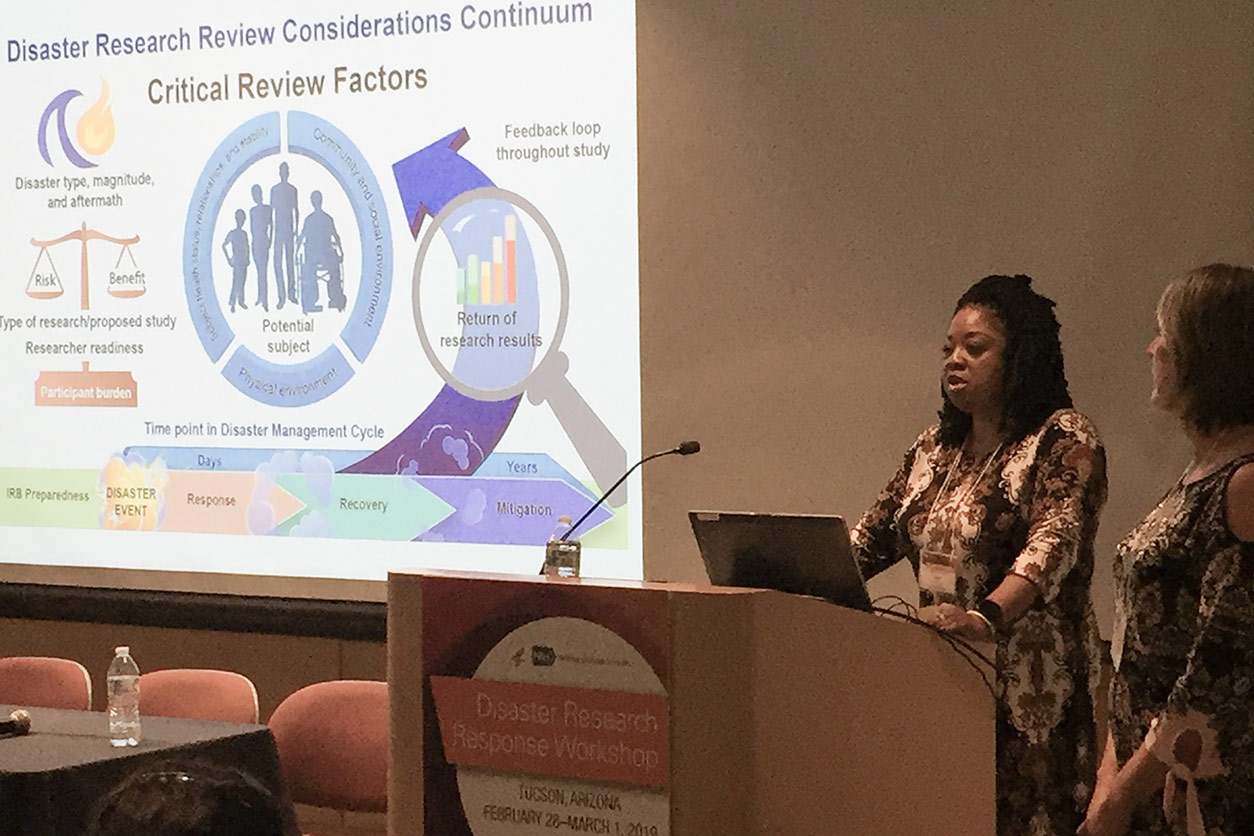 Joan Packenham, Ph.D., left, director of the NIEHS Office of Human Research Compliance, and Mariette Marsh, director of the UA Human Subjects Protection and Privacy Program, shared key factors to consider when conducting clinical research. (Photo courtesy of Richard Kwok)
Joan Packenham, Ph.D., left, director of the NIEHS Office of Human Research Compliance, and Mariette Marsh, director of the UA Human Subjects Protection and Privacy Program, shared key factors to consider when conducting clinical research. (Photo courtesy of Richard Kwok)Kim Janes, from the Pima County Health Department, said he appreciated new connections with the university. “One important take away is, how do we get mental health involved from the beginning?” he asked.
Emergency medicine pediatrician Andreas Theodorou, M.D., from UA, reminded the audience that children’s exposures during and following disasters are different from those of adults.
“NIEHS has long recognized that research conducted in children requires consideration of their unique attributes,” said NIEHS Health Science Policy Analyst Kimberly Thigpen Tart, J.D. “So [Theodorou’s] direction that DR2 should identify and develop resources for this vulnerable population was on point and well-taken.”





